![]()
![]()
![]()
Use LEFT and RIGHT arrow keys to navigate between flashcards;
Use UP and DOWN arrow keys to flip the card;
H to show hint;
A reads text to speech;
11 Cards in this Set
- Front
- Back
|
Endoplasmic reticulum
|
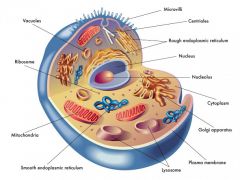
Complex organelle composed of membrane bound, flattened sacs, elongated canals, and fluid filled bubble like sacs called vesicles.
|
|
|
Ribosomes
|
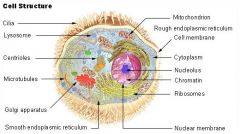
Where protein synthesis occurs, are attached to ER membranes or are scattered throughout the cytoplasm.
|
|
|
Polysomes
|
Clusters of ribosomes in the cytoplasm that enable a cell to quickly manufacture proteins required in a large amount.
|
|
|
Golgi apparatus
|
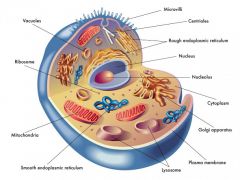
Stack of about six flattened membranous sacs.
|
|
|
Mitochondria
|
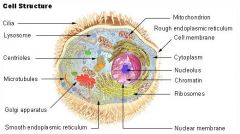
Elongated, fluid filled sacs that vary in size and shape.
|
|
|
Lysosomes
|
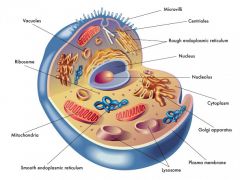
"Garbage disposal of the cell" tiny membranous sacs.
|
|
|
Microtubule and microfilaments
|
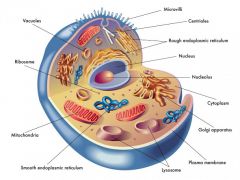
Two types of thin threadlike strands in the cytoplasm. Microfilaments are tiny rods of a protein called actin.
Microtubules are long slender tubes with diameters two or three times those of microfilms to. |
|
|
Nucleolus
|
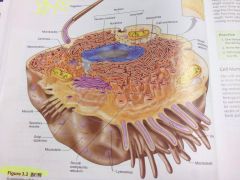
Dense body composed largely of RNA and protein
|
|
|
Chromatin
|
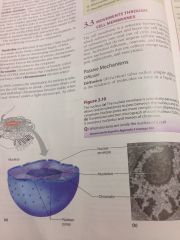
Loosely coiled fibers of DNA and protein that condensers form chromosomes
|
|
|
Nuclear envelope
|
Roughly spherical structure, double layer consists of inner and outer lipid bolster membranes
|
|
|
Cilia and flagella
|

Motile projections attached beneath the cell membrane.
Cilia propel fluid over cellular surfaces Flagellum enable sperm to move |

